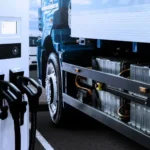Connected vehicles represent a significant leap forward in the evolution of transportation, merging advanced communication technologies with traditional automotive systems. These vehicles, infrastructure, and various networks can communicate with each other, enabling safer, more efficient, and smarter transportation systems. This article delves into the various aspects of connected vehicles, exploring their technology, benefits, challenges, and future trends.
Understanding Connected Vehicles
Connected vehicles are part of the broader ecosystem of intelligent transportation systems (ITS), where vehicles are integrated into a network that allows for real-time communication and data exchange.
Definition and Concept of Connected Vehicles
Connected vehicles are equipped with internet access and a suite of communication technologies that allow them to interact with other vehicles (V2V), infrastructure (V2I), and even pedestrians (V2P). This connectivity enables the vehicles to share and receive data, improving safety, efficiency, and driving experience. The concept of connected vehicles is central to the development of smart cities, where transportation systems are seamlessly integrated into a network that optimizes traffic flow and reduces accidents.
Types of Communication in Connected Vehicles
Several types of communication-connected vehicles utilize:
- Vehicle-to-Vehicle (V2V): This type of communication allows vehicles to exchange information about their speed, location, and direction, which helps in preventing collisions and improving traffic management.
- Vehicle-to-Infrastructure (V2I): V2I communication enables vehicles to interact with traffic lights, road signs, and other infrastructure, helping to reduce congestion and enhance road safety by providing real-time updates on road conditions.
- Vehicle-to-Everything (V2X): V2X is an umbrella term that encompasses V2V, V2I, and Vehicle-to-Pedestrian (V2P) communications. It ensures that vehicles can communicate with any entity that may impact the vehicle or be impacted by it, thus creating a comprehensive network of interactions.
Importance of Connectivity in Modern Vehicles
Connectivity in modern vehicles is crucial as it lays the foundation for autonomous driving, enhances safety, and improves the overall driving experience. By enabling real-time communication, connected vehicles can anticipate and avoid potential hazards, reduce traffic congestion, and provide drivers with useful information such as route suggestions, parking availability, and vehicle diagnostics. The importance of connectivity is further underscored by its role in the future of mobility, which is expected to lead to the development of fully autonomous vehicles and smart cities.
Key Technologies in Connected Vehicles
The functionality and effectiveness of connected vehicles rely on several key technologies, each playing a crucial role in enabling communication, data processing, and decision-making.
Telematics
Telematics is a critical technology in connected vehicles, combining telecommunications and informatics to provide a wide range of services. These include navigation assistance, vehicle tracking, remote diagnostics, and emergency services. Telematics systems collect and transmit data from the vehicle to external servers, where it can be analyzed and used to improve vehicle performance, safety, and user experience. Fleet managers often use these systems to monitor vehicle health and driver behavior and optimize routes.
Internet of Things (IoT)
The Internet of Things (IoT) is the backbone of connected vehicle technology, enabling vehicles to communicate with other devices and systems within a larger network. IoT integrates sensors, actuators, and communication technologies to allow vehicles to share data with external entities such as traffic management systems, other vehicles, and cloud-based services. This connectivity is crucial for real-time data exchange, predictive maintenance, and the overall functionality of connected vehicles. The IoT also facilitates the integration of connected vehicles into smart city infrastructures, enhancing urban mobility and reducing environmental impact.
5G and Advanced Networking
The development of 5G networks and advanced networking technologies is essential for the widespread adoption of connected vehicles. 5G offers ultra-low latency, high bandwidth, and increased reliability, allowing vehicles to communicate in real time with minimal delays. It is particularly important for applications such as autonomous driving, where split-second decisions are critical for safety. Advanced networking also supports connecting connected vehicles with other smart city systems, enabling real-time traffic management, emergency response coordination, and more efficient public transportation.
Benefits of Connected Vehicles
Connected vehicles offer many benefits beyond the individual driver, impacting the broader transportation ecosystem and society.
Enhanced Safety
One of the most significant benefits of connected vehicles is enhanced safety. By enabling vehicles to communicate with each other and the surrounding infrastructure, connected vehicles can anticipate potential hazards and avoid collisions. For example, V2V communication can alert drivers to sudden braking by another vehicle ahead, while V2I communication can provide real-time updates on traffic signals, reducing the likelihood of accidents. This increased situational awareness leads to safer roads and fewer accidents, ultimately saving lives.
Improved Traffic Management
Connected vehicles are crucial in improving traffic management by providing real-time data on traffic conditions, vehicle locations, and road hazards. Traffic management systems can use this data to optimize traffic flow, reduce congestion, and minimize travel times. For instance, traffic lights can be adjusted dynamically based on the volume of vehicles at an intersection, and alternate routes can be suggested to drivers to avoid traffic jams. It leads to more efficient use of road infrastructure and a reduction in the environmental impact of transportation.
Enhanced User Experience
Connected vehicles significantly enhance the user experience by offering various services and conveniences. Drivers can receive real-time navigation assistance, access information on nearby services, and even remotely control certain vehicle functions via smartphone apps. Additionally, connected vehicles can provide predictive maintenance alerts, addressing potential issues before they lead to breakdowns. It not only improves the convenience of driving but also increases the reliability and longevity of the vehicle.
Challenges in the Adoption of Connected Vehicles
Despite the numerous benefits, the adoption of connected vehicles faces several challenges that must be addressed to ensure their successful integration into the transportation ecosystem.
Security and Privacy Concerns
The increased connectivity of vehicles raises significant security and privacy concerns. Connected vehicles are vulnerable to cyberattacks, which can compromise the safety and privacy of drivers. Hackers could potentially gain control of a vehicle’s systems, leading to accidents or unauthorized access to personal data. Ensuring the security of connected vehicles requires robust cybersecurity measures, including encryption, secure communication protocols, and regular software updates. Privacy concerns also arise from the vast amounts of data connected vehicles collect, including location, driving habits, and personal information. Protecting this data and ensuring it is used responsibly is crucial for gaining public trust in connected vehicle technology.
Infrastructure Requirements
The widespread adoption of connected vehicles requires significant upgrades to existing infrastructure. It includes deploying 5G networks, installing V2I communication devices on roads and highways, and integrating traffic management systems with connected vehicle networks. These infrastructure requirements represent a substantial investment for governments and municipalities, and their implementation will be a key factor in the success of connected vehicles. Additionally, ensuring that infrastructure is standardized across regions and countries is essential for the seamless operation of connected vehicles globally.
Regulatory and Legal Challenges
The introduction of connected vehicles raises numerous regulatory and legal challenges that must be addressed to ensure their safe and effective operation. It includes developing standards for V2V and V2I communication, establishing liability in the event of accidents involving connected vehicles, and creating regulations for using and protecting data collected by connected vehicles. Governments and regulatory bodies must work closely with industry stakeholders to develop a legal framework that supports the safe and widespread adoption of connected vehicles while addressing these challenges.
Future Trends in Connected Vehicles
As technology continues to evolve, connected vehicles are expected to play an increasingly important role in the future of transportation.
Autonomous Vehicles
Connected vehicles are a stepping stone to the development of fully autonomous vehicles, which will rely on V2V, V2I, and V2X communication to navigate roads without human intervention. Autonomous vehicles have the potential to significantly reduce accidents, optimize traffic flow, and provide mobility solutions for individuals who are unable to drive. Integrating connected vehicle technology with autonomous driving systems will be crucial for successfully deploying self-driving cars, enabling them to interact with other vehicles, infrastructure, and pedestrians in real time.
Integration with Smart Cities
Connected vehicles are a key component of smart city initiatives, where they are integrated into a larger network of intelligent transportation systems. In smart cities, connected vehicles will work with other technologies, such as smart traffic lights, public transportation systems, and energy grids, to create a more efficient, sustainable, and connected urban environment. This integration will lead to improved mobility, reduced emissions, and enhanced quality of life for city residents.
Advancements in Vehicle Communication Technology
The future of connected vehicles will be shaped by advancements in vehicle communication technology, including the development of 6G networks, edge computing, and artificial intelligence. These technologies will enable faster, more reliable communication between vehicles and infrastructure, improving connected vehicles’ safety, efficiency, and convenience. Additionally, advancements in AI will allow connected vehicles to process and analyze vast amounts of data in real time, making them more autonomous and capable of handling complex driving scenarios.
Conclusion
Connected vehicles represent a transformative shift in the transportation industry, offering significant safety, efficiency, and user experience benefits. As key technologies such as telematics, IoT, and 5G continue to advance, connected vehicles will become increasingly integrated into our daily lives, paving the way for autonomous driving and smart cities. However, security concerns, infrastructure requirements, and regulatory issues must be addressed to ensure the successful adoption of connected vehicles. As we move forward, connected vehicles will play a crucial role in shaping the future of transportation, making our roads safer, cities smarter, and journeys more enjoyable.










